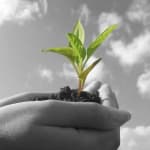 The European Commission has adopted a strategy to shift the European economy towards greater and more sustainable use of renewable resources.
The European Commission has adopted a strategy to shift the European economy towards greater and more sustainable use of renewable resources. With the world population approaching 9 billion by 2050 and natural resources finite, Europe needs renewable biological resources for secure and healthy food and feed, as well as for materials, energy, and other products.
The Commission's strategy and action plan, "Innovating for Sustainable Growth: a Bioeconomy for Europe", outlines a coherent, cross-sectoral and inter-disciplinary approach to the issue. The goal is a more innovative and low-emissions economy, reconciling demands for sustainable agriculture and fisheries, food security, and the sustainable use of renewable biological resources for industrial purposes, while ensuring biodiversity and environmental protection. The plan therefore focuses on three key aspects: developing new technologies and processes for the bioeconomy; developing markets and competitiveness in bioeconomy sectors; and pushing policymakers and stakeholders to work more closely together.
"Europe needs to make the transition to a post-petroleum economy. Greater use of renewable resources is no longer just an option, it is a necessity. We must drive the transition from a fossil-based to a bio-based society with research and innovation as the motor. This is good for our environment, our food and energy security, and for Europe's competitiveness for the future," said Commissioner for Research, Innovation and Science Máire Geoghegan-Quinn.

The term "Bioeconomy" means an economy using biological resources from the land and sea, as well as waste, as inputs to food and feed, industrial and energy production. It also covers the use of bio-based processes for sustainable industries. Bio-waste for example has considerable potential as an alternative to chemical fertilizers or for conversion into bio-energy, and can meet 2% of the EU renewable energy target.
The EU bioeconomy already has a turnover of nearly €2 trillion and employs more than 22 million people, 9% of total employment in the EU. It includes agriculture, forestry, fisheries, food and pulp and paper production, as well as parts of chemical, biotechnological and energy industries. Each euro invested in EU-funded bioeconomy research and innovation is estimated to trigger €10 of value added in bioeconomy sectors by 2025.
The Strategy has three main pillars:
1) Investment in research, innovation and skills for the bioeconomy. This should include EU funding, national funding, private investment and enhancing synergies with other policy initiatives.
2) Development of markets and competitiveness in bioeconomy sectors by a sustainable intensification of primary production, conversion of waste streams into value-added products, as well as mutual learning mechanisms for improved production and resource efficiency. As an example, food waste costs the European taxpayer between €55 and €90 per tonne to dispose of, and produces 170 million tonnes of CO. This waste could be transformed into bio-energy or other bio-based products, creating jobs and growth.
3) Reinforced policy coordination and stakeholder engagement, through the creation of a Bioeconomy Panel, a Bioeconomy Observatory and regular Stakeholder Conferences;
The strategy seeks synergies and complementarities with other policy areas, instruments and funding sources which share and address the same objectives, such as the Cohesion Funds, the Common Agricultural and Fisheries Policies (CAP and CFP), the Integrated Maritime Policy (IMP), environmental, industrial, employment, energy and health policies. The preparation of the Strategy was led by Commissioner Geoghegan-Quinn with the support of four other Commissioners: Vice-President Tajani and Commissioners Cioloş, Damanaki and Potočnik. With Research and Innovation at the heart of the Strategy, it will first be presented to EU Member States at the Competitiveness Council on 21 February 2012.


